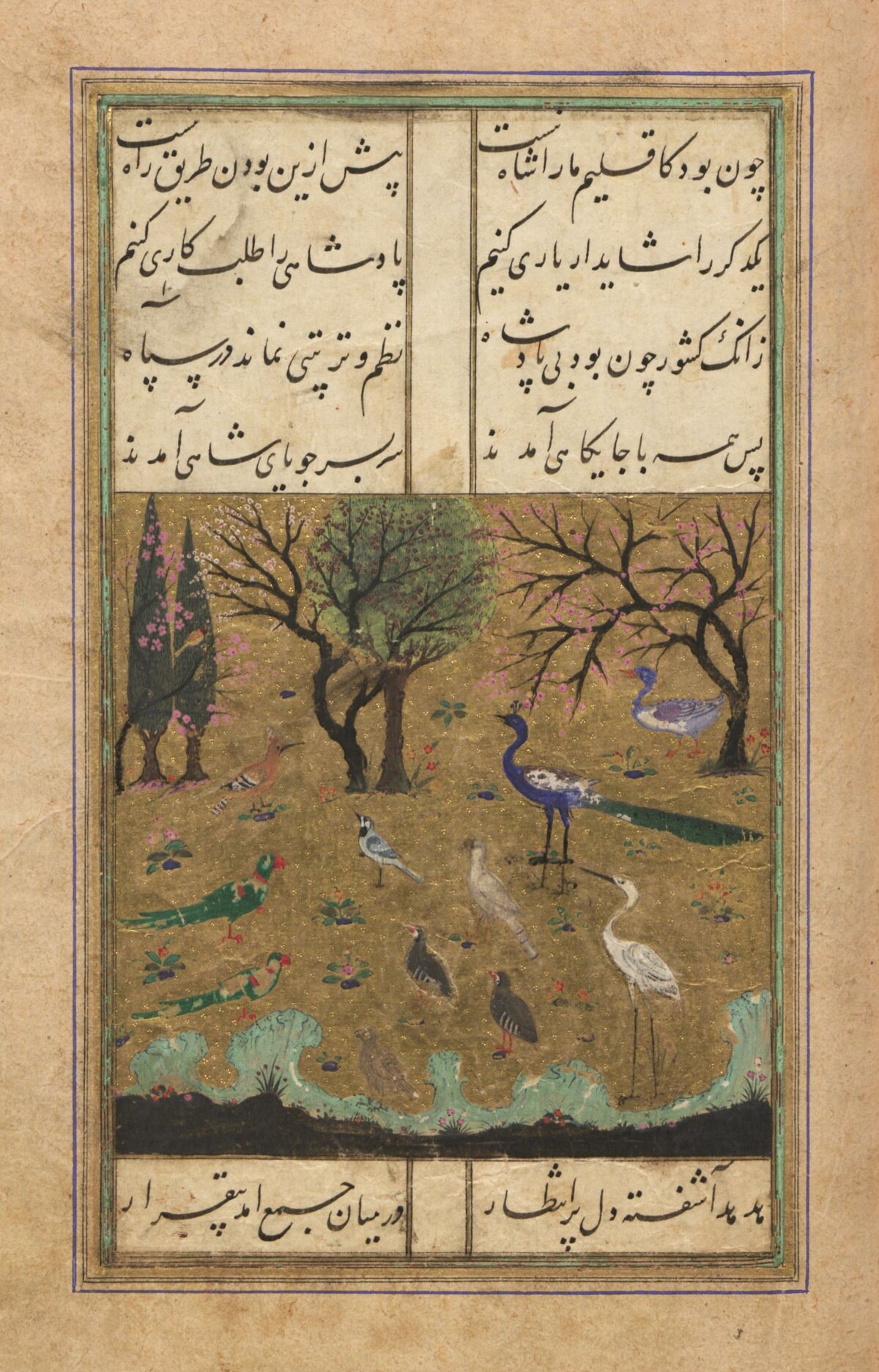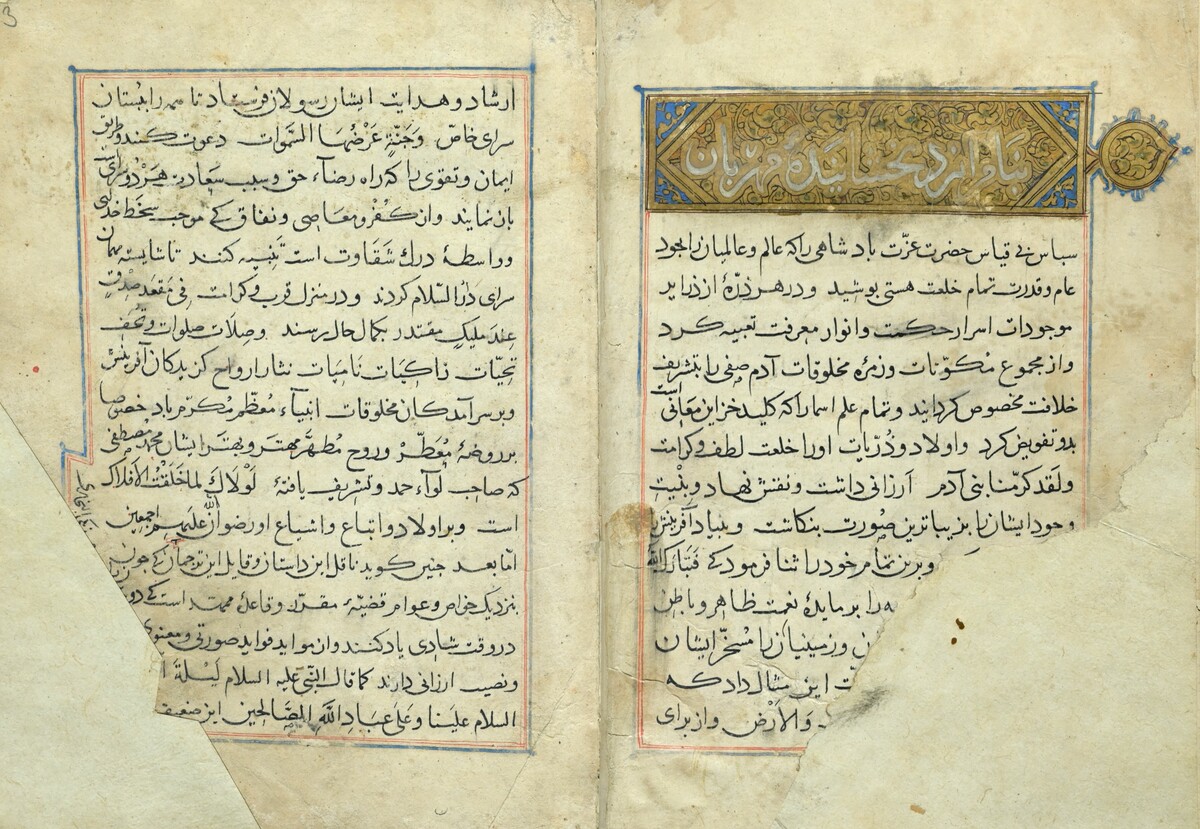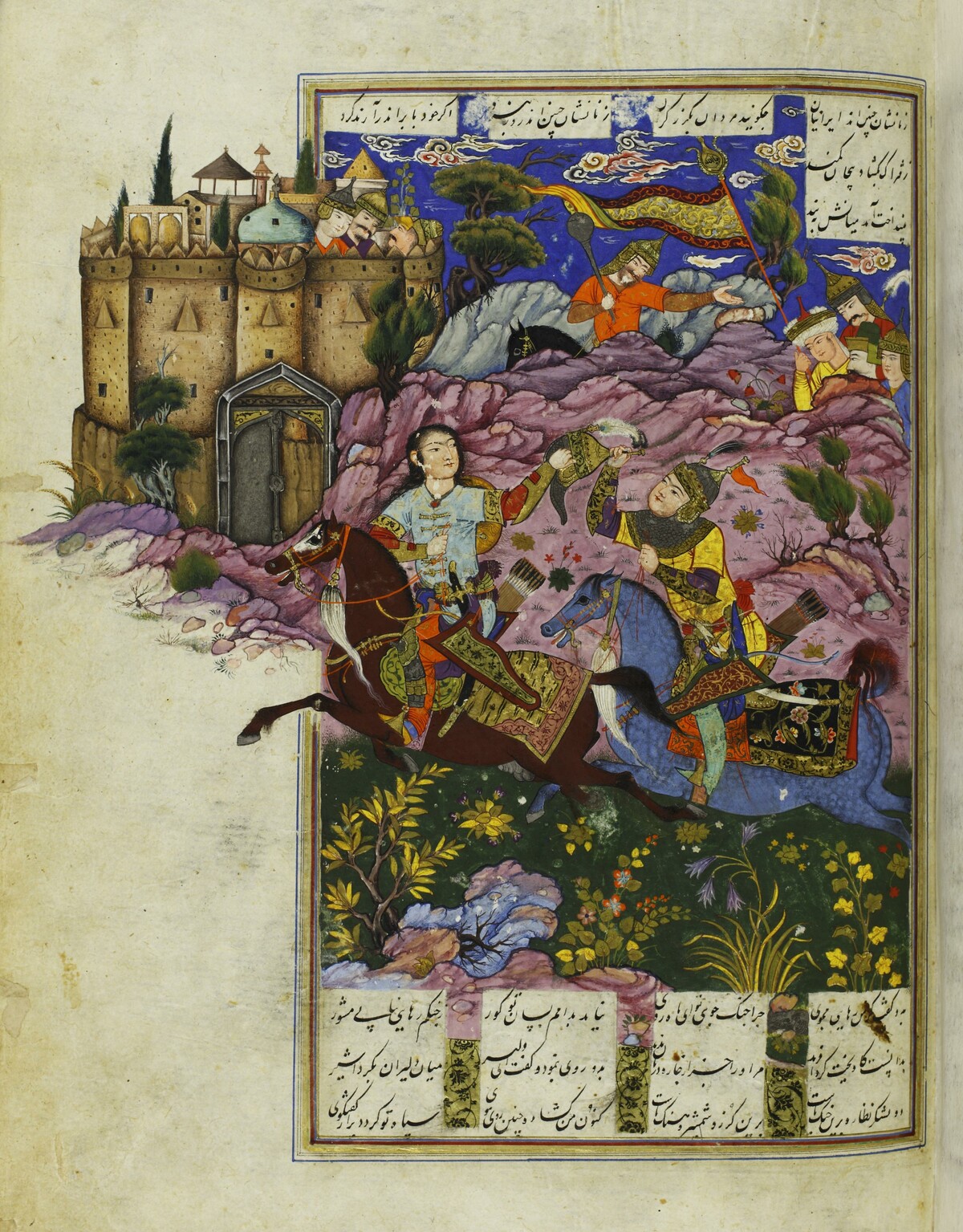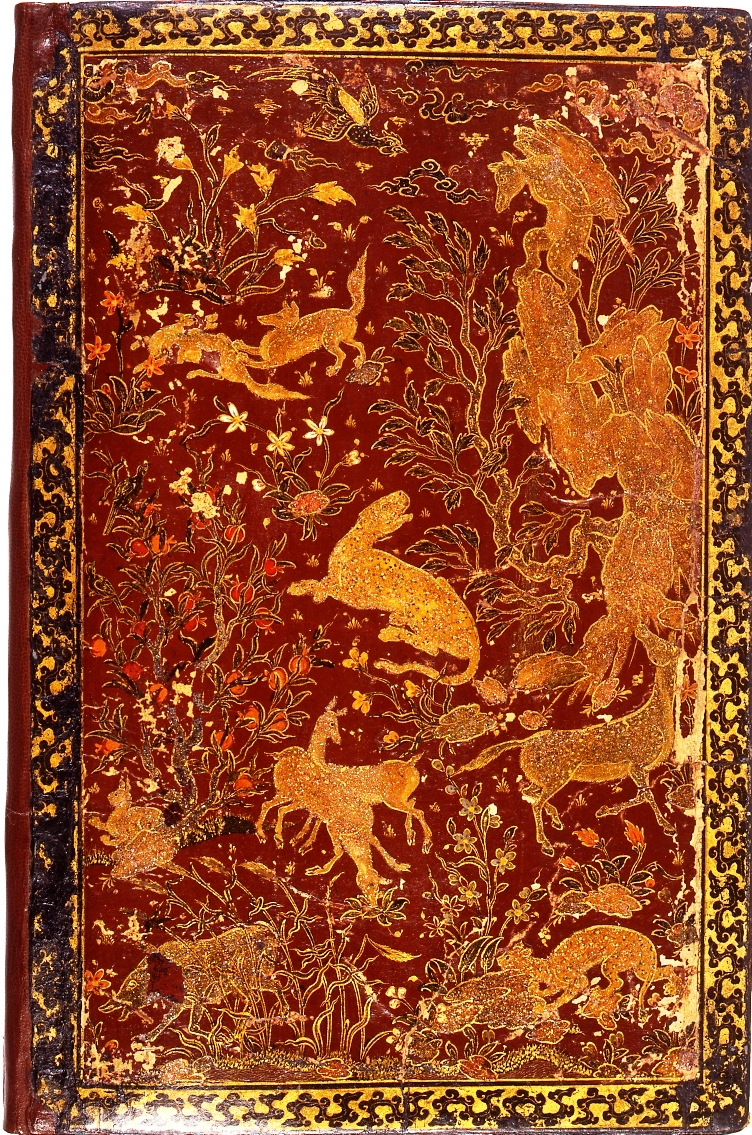Orient
Persian Manuscripts
The Persian manuscript collection of the Staatsbibliothek, which currently comprises about 2,907 volumes, has a long tradition. It is possible that Persian manuscripts were already in the Electoral Library at the time of their foundation in 1661.
These manuscripts come from different provenances and are due to numerous orientalists, envoys, diplomats and travelling merchants. Thus, in 1672, the manuscripts in Persian and Turkish were acquired from the former possession of the interpreter and orientalist Adam Olearius (1603–1671). In 1677/1679 and 1691/1707 the manuscripts from the "nachlässe" of Theodor Petraeus (1630–1672), professor of oriental languages in Königsberg, and Christian Raue (1613–1677), last professor in Frankfurt an der Oder, also came to the library.
The library of the Prussian envoy to the Sublime Porte Heinrich Friedrich von Diez (1751–1817), which he had bequeathed to the Royal Library, contains 17,000 printed books and 836 manuscripts, including over 400 oriental ones. Among the 51 Persian manuscripts are unique miniature albums. Some leaves of these albums probably date back to the 14th century.
Systematic and at the same time extensive acquisitions of oriental manuscripts began after 1850. Persian manuscripts came to the library in large numbers with the collections Diez, Petermann, Sprenger and Minutoli, which were set up separately and received shelf marks, the first part of which is in the name of the collector.
The orientalist Julius Heinrich Petermann (1801–1876) amassed a collection of manuscripts during his travels in the Near East and Persia in the years 1852–1855, which came to the Royal Library in 1853–1857, including 140 Persian ones. Another 91 were acquired by Petermann after 1870.
The collection of the orientalist Aloys Sprenger (1813–1893) enriched the library with numerous Persian manuscripts from India. Sprenger had collected about 2,000 manuscripts and prints in Arabic, Persian and Turkish languages as well as Hindustani in Syria and India, which were purchased in 1857. The number of Persian manuscripts is 310.
The collection of Julius von Minutoli (1804–1860) was collected during an embassy trip to Persia in 1860/61, which he had undertaken together with Heinrich Brugsch (1827–1894) and Ignacy Pietraszewski (1796–1869). The manuscript collection, which contains 112 Persian manuscripts, was purchased in 1864. Noteworthy is the Ǧahāngīr album, which has a particularly high artistic value.
Wilhelm Pertsch's catalogue of the Persian manuscripts of the Royal Library in Berlin, published in 1888, contains 1098 catalogue numbers. About two-thirds of the manuscripts described there were acquired after 1850.
Subsequently, the library took advantage of numerous opportunities for smaller acquisitions of manuscripts in the Persian language.
Special mention should be made of the many precious miniature manuscripts and albums, some of which are equipped with valuable lacquer bindings. The collection also includes a remarkable thirteen illuminated Šāhnāma specimens.
Some rare manuscripts in Pashto and Kurdish are also represented in the Berlin collection.
Zangī-nāma
Title after Afšār, Iraǧ (ed.): Zangī-nāma, šiš risāla wa maqāma wa munāzira. Tihrān 1372 [=1994], p. IX.
A well-preserved autograph from the early 14th century by Muḥammad Ibn-Maḥmūd Ibn-Muḥammad Zangī al-Buḫārī (d. ca. 1313) in a composite manuscript. The manuscript contains stories about the prophet and Sufi saints as well as various imaginary "Rankstreitgespräche" (Munāẓara).




